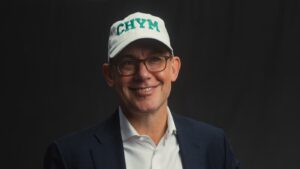Alexander Pershikov is a transportation evangelist, founder of GetTransfer.com, serial entrepreneur, and visionary in dating apps.
After years of training their fingers to “swipe right,” Generation Z is hitting a wall. A recent survey found that 79% of Gen Z users feel “dating app burnout”—a mix of emotional, mental and physical exhaustion from using apps like Tinder and Bumble. This “swipe fatigue” has become so widespread that even cultural commentators have taken note. “Dating apps once looked like the foundation of American romance,” one Atlantic writer observed. “Now the cracks are starting to show.”
What’s behind the fatigue? In the survey, 40% of respondents said they struggled to find genuine connections on dating apps. Significant numbers reported toxic experiences: 41% admitted to ghosting someone, 38% had been catfished, and 27% said they’d been “love bombed” (overwhelmed with early affection). It’s little surprise that heavy app usage takes a toll—the average user spends over 50 minutes a day swiping, which can lead to stress and “dating fatigue.”
As a result, many young people are cutting back on dating app use. One study found nearly 80% of U.S. college and graduate students do not use dating apps regularly, preferring to meet people through other means. Some are even turning to old-school matchmakers and in-person events. “My Gen Z clients say they come to me because dating apps are dead,” one Los Angeles matchmaker noted, citing a surge of 20-somethings seeking “old-fashioned” introductions.
All of this raises the question of what entrepreneurs in the dating service industry can do to combat this shortfall. Drawing from my own experience and my company’s work with dating service professionals, let’s take a closer look at some trends currently shaping the industry.
Quality Over Quantity: The Rise Of Invite-Only Dating Platforms
Despite being burned out by the swipe treadmill, Gen Z singles aren’t giving up on finding love—but they are looking beyond the mainstream apps. A growing trend is the move toward exclusive, high-end dating platforms that emphasize quality over quantity. These invite-only or membership-based apps operate more like private clubs than public marketplaces. In fact, recent industry trends indicate Gen Z daters are “moving away from traditional swipe-based apps in favor of social media and personalized matchmaking services,” reflecting a renewed focus on curated connections.
One big example is Raya, an app that has turned selectivity into a selling point. Raya, launched in 2015, has been described as “the Soho House of dating apps”—an elite members-only platform originally catering to celebrities and creative professionals. It grew quietly via word-of-mouth and a strict vetting process. Aspiring members must be referred by existing users and then pass an approval by an anonymous committee.
The result? Acceptance on Raya is treated as a status symbol by many of its users. Little wonder, when reports indicate only about 8% of applicants are accepted, making entry “a slightly harder nut to crack than Harvard Business School.” Three years after going live, Raya had a waiting list of over 100,000 people for around 10,000 spots.
These typs of exclusive apps turn dating into a VIP experience. Being on any invitation-only dating app confers a certain cachet—it says you’ve been vetted and belong to an “in-crowd” of daters. Where traditional apps can feel like an overcrowded bar, the new wave of exclusive apps attract users with the promise of a red carpet and members-only lounge.
New Opportunities: Entrepreneurs And Investors Tap The ‘Premium Dating’ Boom
This change in dating culture isn’t just social—it’s economic. As swipe-fatigue grows, entrepreneurs and investors are seeing opportunity in delivering more premium, personalized dating services. The dating app industry, a $5 billion market, has been dominated by big players for years, but their growth is slowing down in the face of user dissatisfaction. Match Group, owner of Tinder, reported declining users and saw its stock tumble in late 2024 (subscription required), a sign that Wall Street is also feeling the “swipe fatigue.”
Exclusive apps are just the beginning. Founders are launching niche platforms that blend technology with high-end matchmaking. Now, a new generation of startups is pushing the dating concept further, such as combining exclusivity with psychological assessments in order to match high-profile individuals based on deeper personality traits rather than superficial criteria. Even established dating companies are adapting under this pressure: Seeing the popularity of exclusivity, apps like Hinge and Tinder have rolled out pricier tiers and features to cater to “intentional” daters. Dating services are also branching into real-life networking, with some apps hosting members-only events at upscale venues, blurring the line between dating app and social club. The idea is to offer a lifestyle, not just an app.
Embracing The Dating Revolution
I believe that Gen Z’s flight from swipe-based apps and toward high-end matchmaking platforms marks a new chapter in the online dating story. In an era of “swipe fatigue,” an invite-only app profile or in-person service can carry more promise than a thousand aimless swipes. This shift is redefining what dating tech can look like, encouraging entrepreneurs in the space to focus less on algorithms and more on curated community.
Forbes Business Council is the foremost growth and networking organization for business owners and leaders. Do I qualify?
Read the full article here











